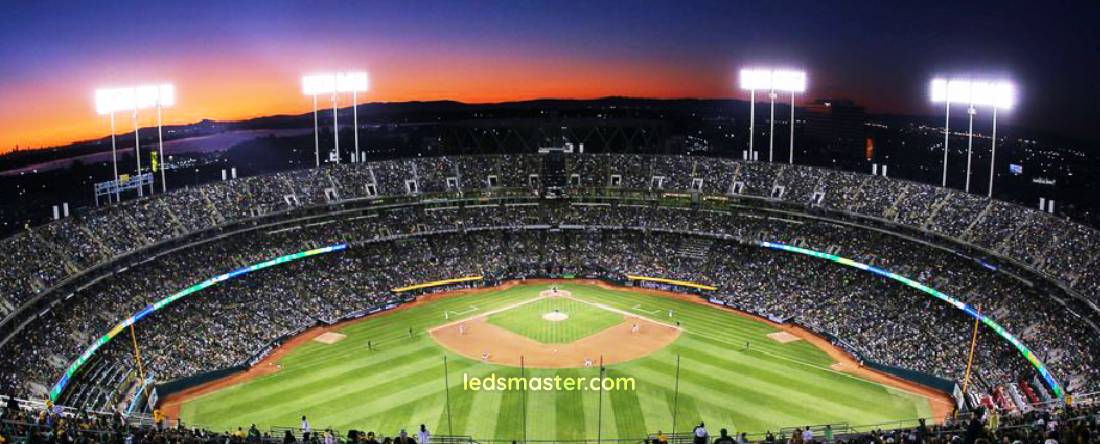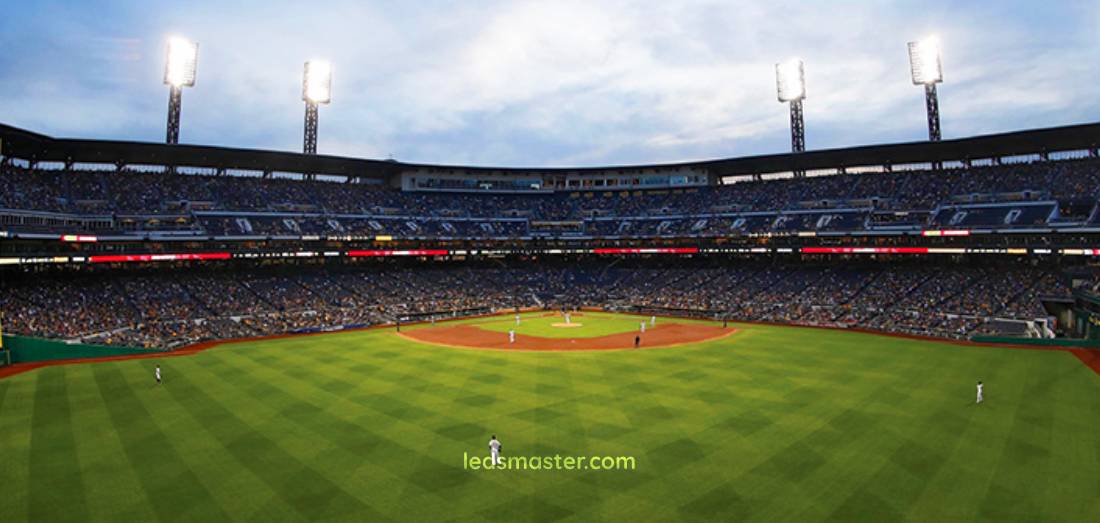From ensuring player safety to extending the life of the lighting system, regular maintenance is key to keeping the field in top condition. Dive into the world of lighting care and discover why this often-unseen work is so vital to the smooth running of every night game.
Get your complimentary lighting design today
Properly maintained lighting ensures that the field remains well-illuminated, minimizing accidents and enhancing performance during night games. However, like any technical system, the lighting system requires regular upkeep to ensure it functions optimally over time. This article explores the reasons for maintaining softball field lighting, the process involved, and the advantages of consistent maintenance.
Table of Contents
ToggleSoftball is a fast-paced sport, and players rely heavily on clear visibility to react swiftly to pitches, hits, and defensive plays. Proper lighting ensures that every part of the field, from the outfield to the dugout, is clearly visible. However, over time, lighting systems may degrade, leading to dim or unevenly lit areas, which pose a risk to both players and spectators. Routine maintenance helps prevent such issues, ensuring the field is consistently illuminated, reducing the risk of accidents caused by poor lighting.
Lighting systems are an investment, and their longevity depends heavily on the care and maintenance they receive. Like any electrical system, wear and tear, weather exposure, and continuous use can cause the components of the lighting system to deteriorate. Regular maintenance, including inspections, cleaning, and replacements of faulty parts, can significantly extend the lifespan of the lighting infrastructure. This reduces the need for costly overhauls or replacements in the long run.
Routine inspections are the foundation of lighting maintenance. These inspections are often conducted on a regular schedule to identify any early signs of wear or malfunction. During an inspection, technicians evaluate the condition of the bulbs, ballasts, wiring, and poles. Special attention is given to detecting loose connections, burnt-out bulbs, or any damage caused by weather conditions. These inspections ensure that potential issues are addressed before they cause major failures.
Outdoor lighting systems, including those on a softball field, are exposed to dirt, dust, and debris, which can accumulate on the fixtures and reduce their brightness. Cleaning the fixtures is a key part of the maintenance process, helping to restore the original illumination levels. In addition, over time, bulbs naturally degrade and lose their luminosity, even if they have not burnt out completely. Regularly replacing aging bulbs with new ones ensures consistent light output and prevents dimming that could affect play.

The electrical components that power the lighting system also require regular attention. Technicians check for any issues with the wiring, transformers, and control panels that could lead to power outages or inconsistent lighting. Faulty wiring or electrical surges can damage the system or pose safety hazards, so it’s essential to address any electrical concerns promptly. Ensuring that the electrical system is in good working order guarantees that the lights function efficiently and safely.
The structural integrity of the light poles and fixtures is a critical aspect of maintenance. Over time, exposure to elements like wind, rain, and extreme temperatures can weaken poles, which can lead to leaning or instability. Technicians check for signs of rust, corrosion, or loosening of fixtures during maintenance to ensure the poles remain securely anchored and aligned. Addressing structural issues early prevents more serious problems that could lead to system failure or safety risks.
Properly maintained lighting contributes to a better overall experience for players and spectators. When the lighting is consistent, players can see the ball, their teammates, and the field more clearly, enhancing their performance and reaction times. Similarly, spectators can enjoy the game without straining to see the action. Regular maintenance ensures that the lighting quality remains at its peak, allowing for high-quality games and events under the lights.
While regular maintenance requires an investment of time and resources, it can save significant costs in the long term. A well-maintained system is less likely to suffer from major breakdowns or require costly repairs. Additionally, replacing a few components during routine maintenance is far more affordable than replacing the entire system due to neglect. Maintenance also ensures that the lighting system operates efficiently, reducing energy costs over time.

In the era of energy efficiency, many softball field lighting systems are equipped with energy-saving technologies such as LED bulbs or motion sensors. However, these technologies need to be regularly maintained to ensure they continue operating at peak efficiency. Well-maintained lighting systems are more energy-efficient, consuming less power while providing optimal illumination. This not only reduces the environmental impact but also lowers operational costs.
One of the biggest challenges in maintaining softball field lighting systems is the effect of weather conditions. Outdoor lights are exposed to the elements year-round, facing wind, rain, snow, and extreme temperatures. These conditions can cause damage to electrical components, reduce the lifespan of bulbs, and compromise the stability of poles. Regular maintenance mitigates these risks by addressing any weather-related damage as soon as it occurs.
As lighting systems age, they require more frequent maintenance to keep them functioning at optimal levels. Older systems may also become less efficient and require upgrades to newer, more energy-efficient technologies. Maintenance technicians must balance the need to preserve the existing system with the potential benefits of upgrading to modern lighting solutions.
Modern technology has made lighting maintenance more efficient. Many softball fields are now equipped with remote monitoring systems that track the performance of each light in real time. These systems can alert maintenance teams when a bulb is nearing the end of its life or if an electrical issue is detected. This allows for proactive maintenance, ensuring problems are addressed before they affect gameplay.
Upgrading from traditional lighting to LED systems is another technological advancement that simplifies maintenance. LEDs are more energy-efficient, durable, and long-lasting than traditional lighting systems. While the initial investment in LED lights may be higher, they require less frequent maintenance, making them a cost-effective solution over time. They also offer better lighting quality, which enhances the playing experience for all involved.

Regular inspections, cleaning, and timely replacements prevent system failures and prolong the lifespan of the lighting infrastructure. Properly maintained lighting provides clear visibility, reduces the risk of accidents, and enhances the overall game experience for players and spectators. With technological advancements such as remote monitoring and energy-efficient lighting solutions, the process of maintaining softball field lighting systems has become more efficient and effective. Investing in consistent maintenance not only protects the financial investment in the lighting system but also ensures that the field remains illuminated and ready for action at all times.